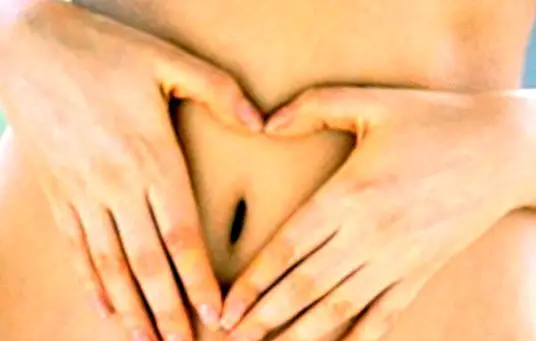How to know if you have colic in the kidney: most common symptoms
The Colic They are characterized by being extremely painful episodes that are produced by the obstruction of either the gallbladder (know more about the gallstones), or kidney and urinary canal.
So, for example, in case of biliary colic the pain tends to concentrate in the right part of the abdomen (from the shoulder blades to the ribs on the right side), whereas in the case of a renal colic -or renal colic– the pain usually extends to the lower back, the genitals and the inner side of the thigh. And it is usually very related to Kidneys pain.

What is renal or renal colic?
Basically we can identify the renal colic or Kidney colic for him severe pain that arises on the sides or lower back, and which is related above all to the Urinary tract, which not only includes the kidneys but also the bladder, the urethra and the ureters.
While the ureters are responsible for transporting urine from the kidneys to the bladder, the urethra transports it to the outside when we urinate. Thus, When there is some type of obstruction in the urinary tract is when it appears or arises the popularly known as kidney colic–
What are the causes of colic in the kidney?
In most cases the main cause has to do with the presence of kidney stones, which consist of pieces of solid material that are formed inside the kidneys from different substances found in the urine. These stones can move to the ureters, while it is possible to have stones in a single kidney or both.
Also exist other causes that can cause obstruction of the urinary tract, as for example is the case of blood clots, presence of dead tissue and spasms in the ureter.
The symptoms of colic in the kidney
A useful way of know if you have kidney colic or not is to know what symptoms produce, since in the majority of the occasions they are usually quite identifying and clear. The pain can start suddenly, appear and disappear and even get worse over the hours.

Among those common symptoms we can mention:
- Sudden and intense pain: which is felt in the groin or lower back. It can also occur on both sides of the lower back. It is not relieved with the application of heat or cold or adopting certain postures.
- Pain that extends: then it is common for this pain to extend to the inguinal region (lower right or left belly), which can be felt close to the genitals.
- Pain and discomfort when urinating.
- Nausea and vomiting.
- Sensation of having to urinate immediately or more frequently.
- Urinate less of what is considered normal, or not to urinate practically nothing.
- Fever: especially when there is infection.
What to do in the presence of colic in the kidney?
It is best to receive emergency medical attention, since the discomfort can become very painful with the passage of hours, increasing considerably to the point that, due to its intensity, can even cause fainting.
Some useful tips to relieve the symptoms of kidney colic
In addition to going quickly to the emergency room or to the consultation of your usual doctor, there are some tips that can help when it comes to relieving symptoms:
- Drink liquids: always following the recommendations and quantities indicated by the doctor. Your doctor may advise you to drink about 12 glasses of fluids a day, half of which should be water. This will help decrease pain by helping to discard obstructions present in the urinary system.
- Avoid and reduce the consumption of certain liquids: such as coffee, tea and carbonated drinks.
- Avoid outdoor activities when it is very hot: since the heat can cause dehydration and in turn urinate in less quantity.
If you want to learn and know more, we recommend you read our article about How to prevent kidney stones and some remedies for kidney stones.
Images | This article is published for informational purposes only. It can not and should not replace the consultation with a Physician. We advise you to consult your Trusted Doctor. ThemesKidneys



